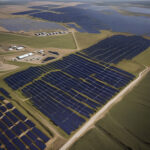Viral AI Image Trends Drive Up Water Consumption
In the age of social media dominance, viral trends have the power to influence every aspect of our lives, including the technology we use. One such technology that has been greatly impacted by viral trends is artificial intelligence (AI). As AI becomes more integrated into our daily lives, the demand for its usage has skyrocketed, leading to an unforeseen consequence – an increase in water consumption.
The link between viral trends and the surge in AI’s water and energy demand may not be immediately apparent, but it is a reality that we cannot afford to overlook. The viral nature of social media challenges and trends often involves the use of AI-powered applications and filters that require significant amounts of water and energy to operate efficiently. Whether it’s the latest face-morphing filter or a trending augmented reality game, these viral AI image trends are driving up the consumption of resources at an alarming rate.
One of the primary reasons for the spike in water consumption is the intensive data processing requirements of AI algorithms. Training AI models to recognize patterns, faces, or objects in images is a computationally expensive task that demands massive amounts of data and computational power. This, in turn, leads to increased energy consumption by data centers that support AI applications, many of which rely on water for cooling purposes.
Furthermore, the proliferation of AI-powered devices such as smartphones, smart cameras, and IoT sensors has also contributed to the surge in water usage. These devices continuously collect and process data to provide personalized experiences and services, all of which require substantial amounts of energy and water to function effectively.
The environmental impact of this surge in water consumption due to viral AI image trends cannot be understated. As water resources become increasingly scarce, it is crucial to address the sustainability of AI technologies and their associated applications. Companies and developers must prioritize the development of water-efficient AI algorithms and invest in renewable energy sources to power data centers, reducing the overall environmental footprint of AI technologies.
Moreover, raising awareness among consumers about the water and energy implications of viral AI image trends is essential. By making informed choices about the apps and filters they use, individuals can contribute to reducing the overall demand for resources and promoting a more sustainable use of technology.
In conclusion, the correlation between viral trends and the increase in AI’s water and energy demand highlights the need for a more conscientious approach to technology consumption. As we continue to witness the pervasive influence of social media on our daily lives, it is imperative that we consider the environmental consequences of our digital habits. By advocating for sustainable practices in AI development and usage, we can strive towards a more eco-friendly future where innovation goes hand in hand with conservation.
#AI, #ViralTrends, #WaterConsumption, #EnvironmentalImpact, #SustainableTechnology












